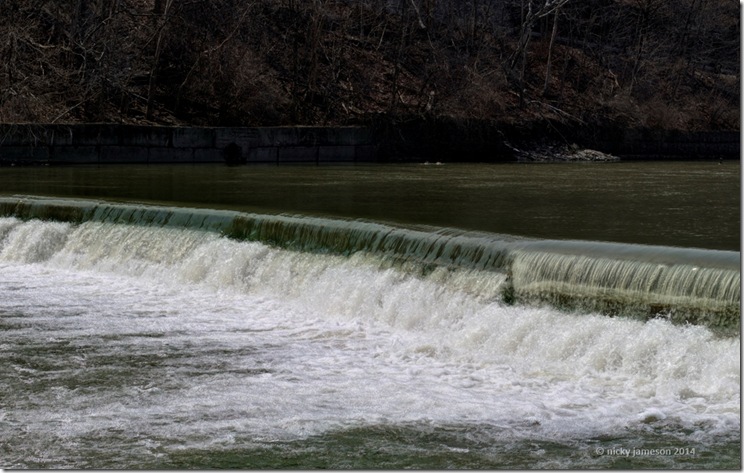Flowing River
Whilst I do love living in Toronto, I sometimes find it hard to shake the idea that I’m living somewhere “new”. That could be because photography can take us back in time as it begins to reveal the history behind the art I am creating. Toronto has a rich history (and I love to discover and share it through my art photography) however compared to my hometown London in England, it’s barely a teenager.
French traders founded a settlement called Fort Rouillé in 1750 in what was to become the Toronto area, but it lasted less than a decade. In 1793 John Graves Simcoe established the town of York on top of what remained of Fort Rouillé, and in 1834 the town became the city of Toronto, reverting back to it’s original native name, which is thought to mean “place where trees stand in the water”.
So, what’s this history lesson got to do with an art photograph, I hear you ask. Well, I wanted to prove that Toronto does have some history before I presented you with the latest entry to my online art gallery. The water you can see flowing over a weir is part of the Lower Humber River Loop, which is one of the main areas of interest inside Étienne Brûlé Park here at the western edge of Old Toronto. Étienne Brûlé Park itself is named after Étienne Brûlé (naturally), a French explorer who was the first European to see Lake Ontario, which he did, according to his journal, on September 19, 1615.
This area of Toronto became important to the city’s development, as the Lower Humber River Loop powered a number of mills that were built to process lumber for the new homes of the residents of what was then called York. A bridge was built across the Humber to create easy access to both banks of the river in 1837, and the present stone bridge was completed in 1916. By then, the milling industry had begun to decline, but the Old Mill area retained its charm as a popular spot among Toronto residents searching for relaxation. The Old Mill Tea Garden was established in 1914, and the area now is home to the Old Mill Inn, a luxury hotel and entertainment venue.
The wilderness photograph Galen Rowell once said:
“There’s no question that photographs communicate more instantly and powerfully than words do, but if you want to communicate a complex concept clearly, you need words, too.”
I hope you agree that my words have added something to what could be mistaken as just a simple picture of a flowing river over what looks like a mini-waterfall. There’s always a story behind every photograph, but sometimes that story isn’t so apparent, and you need to use words to bring that story to the foreground. This is why, I think, I like to blog along with the art photographs I add to my gallery.
Apart from exploring Toronto’s history it was interesting to know that the people of York all those years ago built their homes with wood from the area from with Toronto gets its name. There’s also a personal connection for me as well, as York and Humber share their names with a city, and a river, respectively, back home in England.
Sometimes it’s just nice to connect to the past – both to the history of the place that I now call home, and to the history of where I’m from. Whenever I look at “Flowing River” I am reminded of both.
